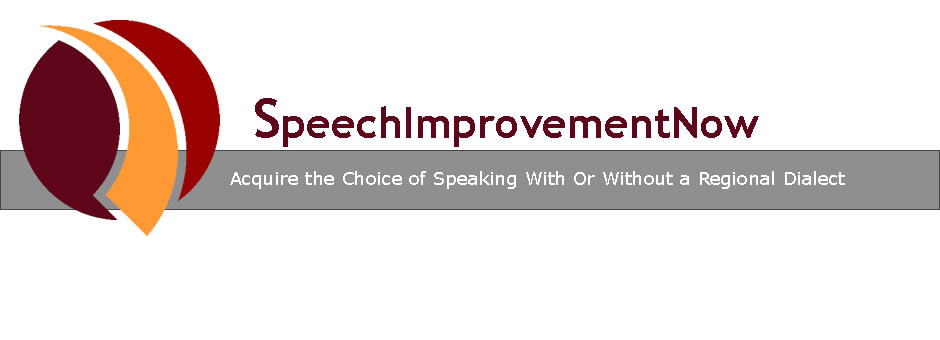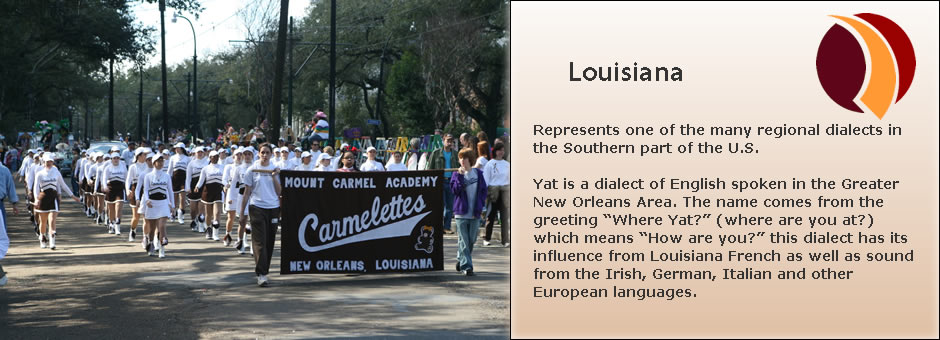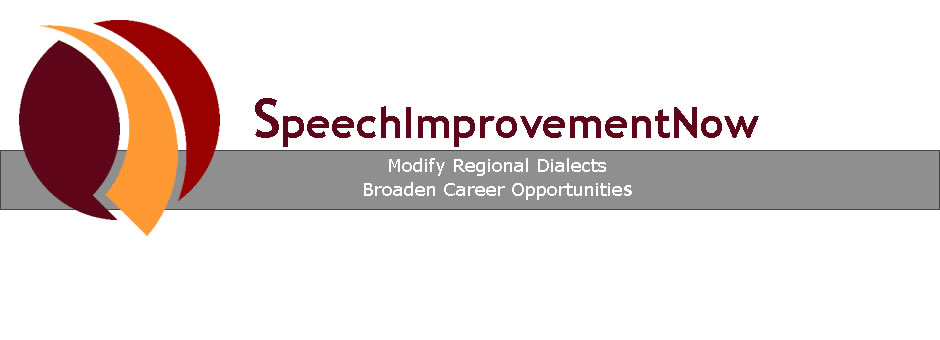Regional Accent or Dialect: Definition
A regional accent or dialect is a speech pattern that alerts the listener that you are from a specific region within the United States. It may include non-standard pronunciation, grammar, resonance, pitch, rate of speech, and differences in vocabulary. This occurs when people acquire the speech pattern typical of the part of America in which they grew up (Examples: Brooklyn, New Jersey, the Carolinas, Boston, etc). Others learned English as their native language outside of the United States but in a dialect different than American English (Examples, British, Australian, Caribbean, etc.).
When should you consider regional dialect/accent modification?
You are a native English speaker and your dialect/accent interferes with your ability to communicate successfully in social or professional situations or is preventing you from achieving your goals.
- 1. The way you speak interferes with your success on the job
- 2. People have difficulty understanding you
- 3. Your pronunciation or grammar differs from the mainstream
- 4. The average listener is distracted by clues that you come from a specific country, region, or background
Our goal is to train you to speak clearly and effectively Standard American English (SAE)
Standard American English (SAE) is the "accent without an accent," a way of speaking which is identifiably American, but does not distract the listener with regional variations. It is the type of pronunciation that is most widely used and accepted by educated speakers across the country. Also called American Broadcaster English, SAE is used by the majority of radio and television personalities throughout the United States.
- It is the type of pronunciation that is most widely used and accepted by educated speakers across the country.
- General American or Middle American Dialects are synonymous terms for (SAE)
- Derivation of Standard American English:
After the Civil War there was an extensive migration settling areas in the western United States to find a better life. The settlers came from the eastern Atlantic seaboard speaking many distinct regional dialects. What emerged over time was a leveling of the eastern dialectal features and the creation of a new dialect (SAE) that eased their communication.
A regional accent modification course at Speech Improvement Now includes:
- A comprehensive speech assessment by a licensed speech-language pathologist
- An individualized program based on an analysis of your speech
- All instructional materials
- Daily practice exercises for you to complete at home
- A final assessment to measure your success
Focus should always be on the content of the message,
never on its delivery or the inability to understand it.
Our company’s mission is not to take away from you your regional accent but to allow you to speak without it when it is to your advantage.
You will acquire an additional pronunciation which is more general and non-regional. Having a regional accent is not always a concern. Regional accents can be charming without interfering with communication. If your friends and family are speaking with a regional accent or you return to the location or country that you were raised then changing your regional accent would understandably be a concern. Your regional accent is part of your local identity and connects you to where you were raised and your local culture. Remember, you can easily switch your dialects back and forth. However, you are reading this because you also know your regional dialect or accent can possibly also hold you back in ways that are important for you.
Examples of Regional Differences:
- If you are from New Orleans, you probably refer to it as “Nawlins” and say “un-YON” and “I ga-RON-tee”
- If you are from New York, you may say: “bee-ah (beer);dem (them)”
- If you are from Virginia, you probably have a Southern drawl and say: “ha:wse(house); ai:gz (eggs)and say aksed instead of asked.
- If you are from New England, you would probably say: “Pahk the cah in hahvahd yahd”
- Accompanied by these different pronunciations are also words typical to each region, different grammar and many idiomatic expressions. These are so different that if you are not familiar with them or get a translation, you won’t know what the person is talking about. These speech patterns also include resonance, pitch, rate of speech and non-standard pronunciation.






